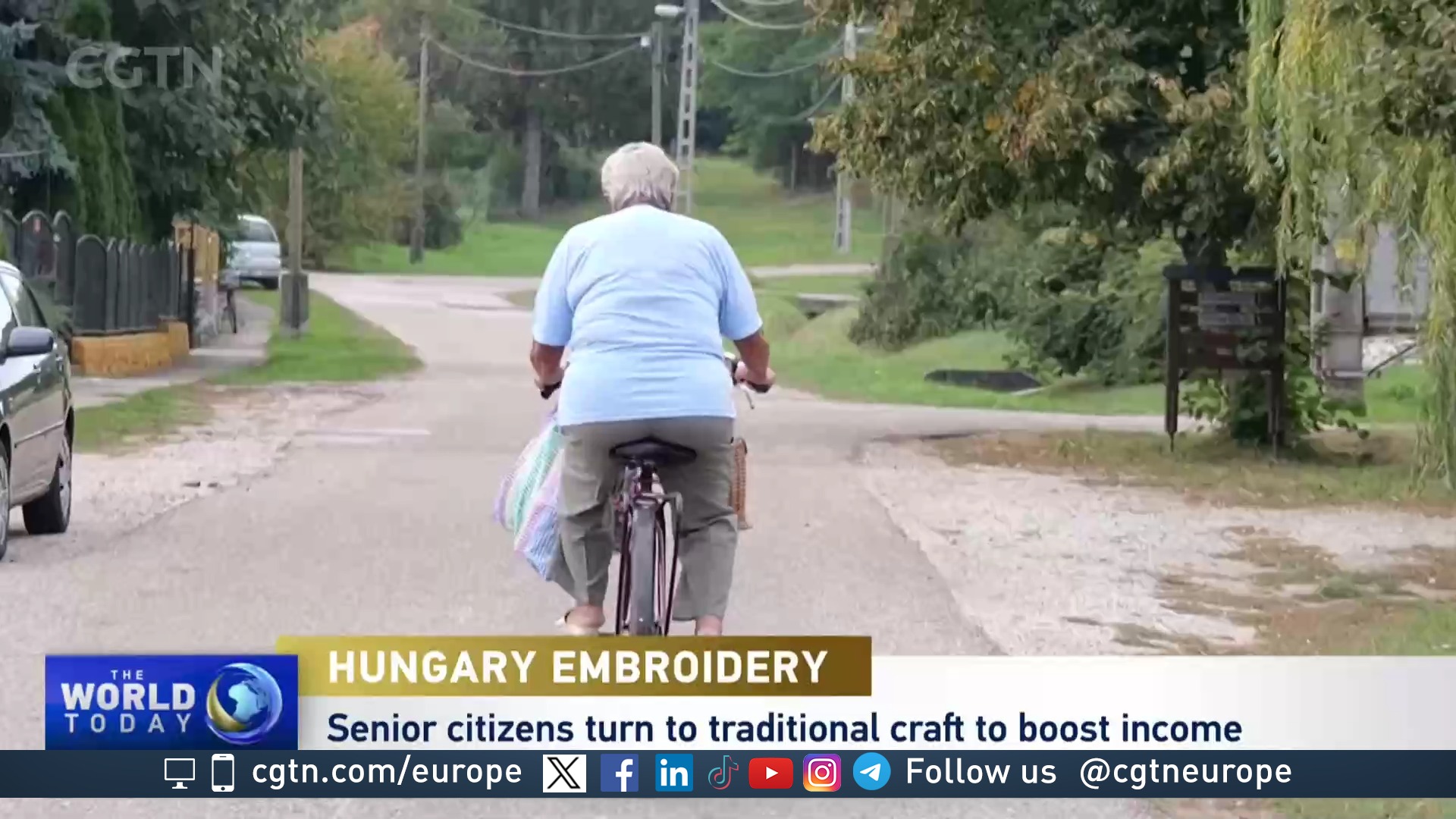02:23

WATCH: Pablo Gutierrez reports from Hungary on this money-making craft
Pensioners are turning to selling traditional embroidery to boost their incomes in an impoverished region of Hungary.
Like many countries around the world, Hungary has been hit by rising inflation and for elderly people who are struggling to get by in Tard, they have turned to Matyo embroidery, a UNESCO Cultural Heritage craft, as a way to make money.
In collaborative workshops, they are stitching for a brighter financial future, one pattern at a time. "This age-old tradition runs deep within my family roots. Back then, they crafted their own garments entirely by hand, as sewing machines didn't exist," said Maria Toth, a Matyo embroidery artisan.
Toth is among the many skilled artisans employed at the Matyo Design workshop in Tard. The company was founded to help elderly women in the village who are no longer able to seek employment due to their age.

Maria Toth is a Matyo embroidery artisan. /CGTN
Maria Toth is a Matyo embroidery artisan. /CGTN
Rozi Vaczi, the Matyo Design founder, said: "When we started this, the main focus was to help those ladies that helped me when I was a little girl. This part of Hungary is especially poor, and there are not so many opportunities."
Tard has Hungary's third-lowest average monthly wage, and unemployment stands at 7.8 percent, nearly double the national rate.
Tibor Kleszo, Tard's mayor, acknowledged the positive impact of Matyo Design, stating: "Matyo Design has created a substantial opportunity for the locals to earn a livelihood by selling this traditional craft, and they've enthusiastically embraced this chance."
READ MORE
Lagarde's interest rate freeze explained
WHO demands fuel access for Gaza
Gaza getting 'crumbs of aid'
Artisans at this workshop can earn up to $140 per pattern. Their creations are now high-fashion pieces for a global clientele and prestigious boutiques.
And for the seamstresses, this is about more than just money. This distinctive style of embroidery has survived for 200 years, passed from mothers to daughters, generation after generation. It's the thread that holds this community together.
Toth wants to pass on this traditional craft to younger generations to prevent its disappearance.
She intends to continue her work until her physical abilities no longer allow her, emphasizing that despite challenges, her love for her craft grows stronger with each pattern she creates.

Subscribe to Storyboard: A weekly newsletter bringing you the best of CGTN every Friday